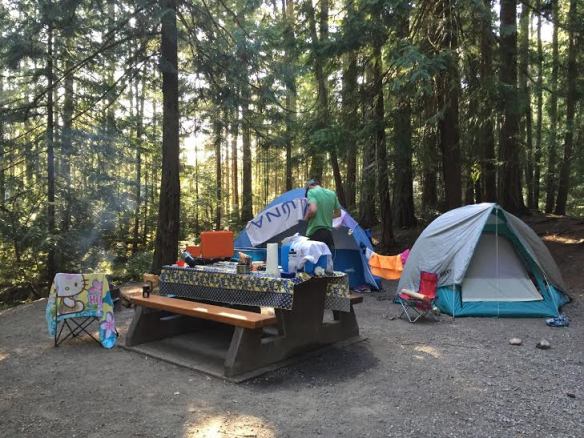
In life or in sport, your resilience grows stronger every time you bounce back and get back in the saddle after a fall. Each time you work on pushing a harder gear, or on increasing your flexibility and adaptability, you become more resilient. Resilience also comes from recognizing strengths you never knew you had until you’ve had to use them.
Like learning to ride a bike, the skill of resiliency can be regularly practiced. And it isn’t always about just “toughing it out”. More often, resilience-building is about finding ways to keep moving forward, to tackle challenges creatively, and to adopt a positive attitude. Here are some ways to practice resilience on the ride of life and sport:
- Widen your perspective by taking time to look around at the bigger views. Sometimes it feels easiest to just stay focused on what is immediately in front of you, to just drive forward harder when feeling overwhelmed. But when a setback occurs, take a pause and stop pedaling for a moment. Take in the beauty of your surroundings without becoming overly preoccupied with the outcome you’re striving towards. Take time to breathe, to appreciate the full spectrum of your experiences, and to connect others who are riding alongside you.
- Recognize that you are fully responsible for steering your bicycle. You can’t control the conditions, unexpected flat tires, or how fast or well others are riding around you. But you can choose how to respond to changes and setbacks. You can choose to steer toward positivity and hope and away from negativity and hopelessness. Where you look is where you will go!
- Accept changes in the terrain. As in life, changes along the road and the trail are to be expected. When you accept the uncertainties and unknowns, you’ll be better able to change your approach, your line, your equipment, or your position with ease and flexibility.
- Anticipate challenges up ahead. When the journey becomes long, difficult or extremely uncomfortable, focus on the positive ways that you can embrace and meet such challenges. Meeting anticipated challenges with a positive plan will help you feel more confident and in control of your ride and less prone to dwell on possible negative outcomes.
- Smooth out your pedal strokes when you feel them getting choppy. When you feel yourself reacting to a challenge with escalating stress and anxiety, recognize your emotions, physical symptoms or behaviors/habits that increase the tension and choppiness in your pedal stroke. Practice calming techniques that work for you to smooth out your pedal stroke again, things like relaxation, meditation, yoga, visualization, stretching, and deep breathing.
- Ride through your fears. Don’t let fear hold you back from the opportunities for growth that came come from changing direction or exploring a new route. Start with the simplest thing you can do that will take you in the direction you want to go. Once you’ve studied a new map, a new way of looking at things, and the route you want to take, go ride it!
- Let go of the anger brakes. Difficult obstacles like logs, rocks, and slick roots can cause us to feel frustrated, impatient or even angry. While such feelings are normal, they won’t help us move forward and flow over or through the obstacles in our path. Negative emotions only cause us to stiffen up, to tighten our grip on the handle bars, and to attempt to force the bike to go where we want it to. When we learn how to ride through our negative feelings and to let go of them, we can move forward with fluidity, openness and the ability to absorb the obstacles in our path instead of fighting them.
- Take action and change gears. Avoid dwelling on setbacks that can temporary sideline you or blaming things like your bike, external circumstances or other people. Focus on what you can do and on solutions. Figure out how you can fix your bike and get back on. Then do it and take it one step, one pedal stroke at a time.
- Laugh. On days when you can’t seem to ride in a straight line or you keep or falling off your bike, find time to smile and laugh, even if it’s at yourself. Watch something funny, or spend time pedaling with friends who can always find the humour in life.
- Focus on the parts that are working well. Be thankful for each bike ride you have the opportunity to go on, and your body that gives you the ability to pedal your bike anywhere you want to go. Try to appreciate the day-to-day good things with a spirit of gratitude. The more time you spend looking for the positives, the quicker you will see them and enjoy them fully.













